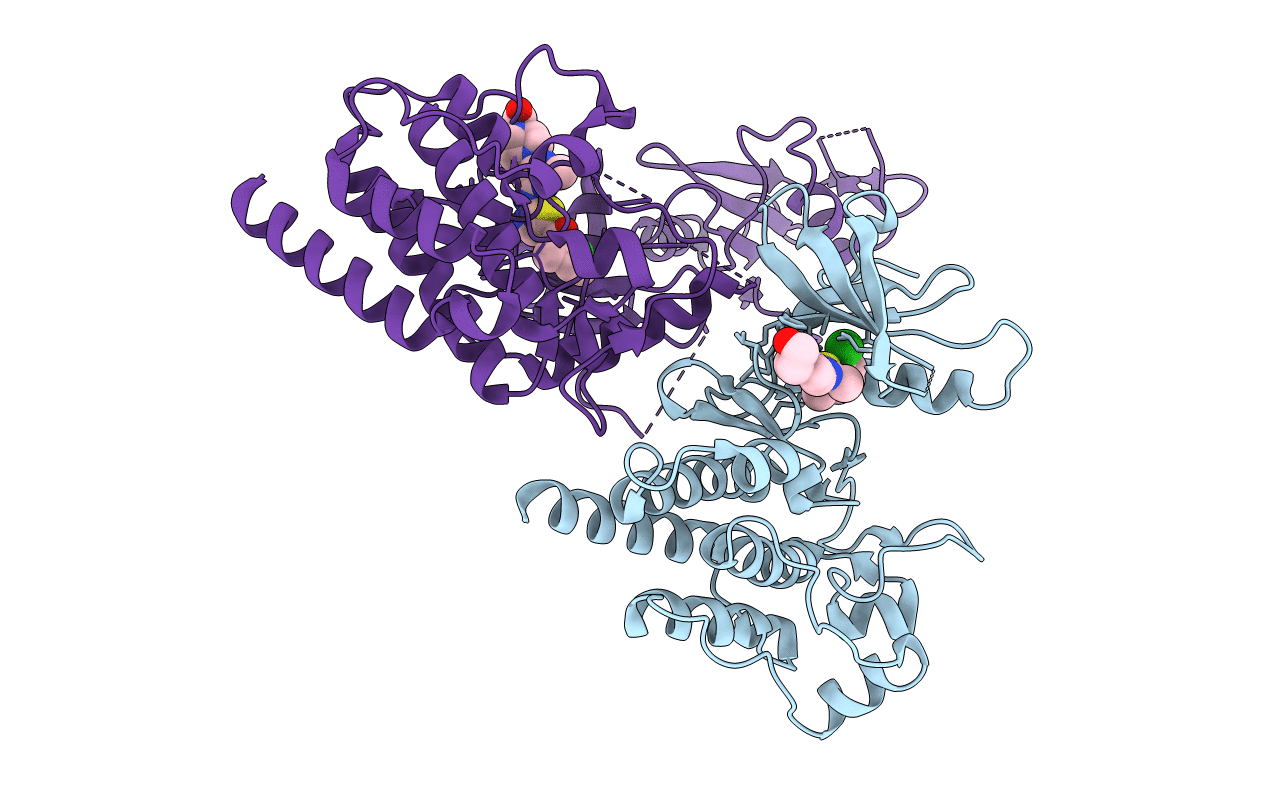
Deposition Date
2014-12-25
Release Date
2015-04-01
Last Version Date
2023-09-27
Entry Detail
PDB ID:
4XEY
Keywords:
Title:
Crystal structure of an SH2-kinase domain construct of c-Abl tyrosine kinase
Biological Source:
Source Organism:
Homo sapiens (Taxon ID: 9606)
Host Organism:
Method Details:
Experimental Method:
Resolution:
2.89 Å
R-Value Free:
0.25
R-Value Work:
0.23
R-Value Observed:
0.23
Space Group:
P 21 21 2


